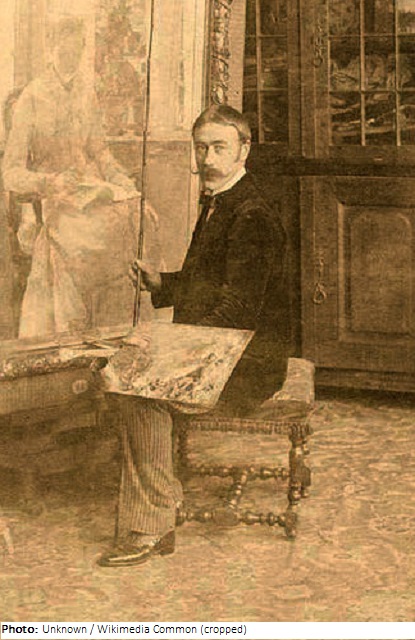Walter Gay

Biographical information
| Roles | Referee |
|---|---|
| Sex | Male |
| Full name | Walter•Gay |
| Used name | Walter•Gay |
| Born | 22 January 1856 in Hingham, Massachusetts (USA) |
| Died | 14 July 1937 in Villiers-en-Bière, Seine-et-Marne (FRA) |
| NOC |  United States United States |
Biography
Walter Gay spent his childhood in Dorchester/Boston and received his first training from his uncle, the painter Winckworth Allan Gay (1821-1910). Walter then attended evening classes at the Lowell Institute in Boston. From 1876, he lived in Paris, where he met the artists of Montmartre, and became a pupil of Léon Bonnat (1833-1922). In 1889 he married Matilda Travers (1855-1943), the daughter of a wealthy New York lawyer and entrepreneur. The wife’s inheritance enabled the couple to maintain a lavish lifestyle throughout their lives.
Gay became a member of the American Federation of the Arts, the National Institute of Arts and Letters, the Society of American Artists, and the Société National des Beaux-Arts, amongst others. In 1894, he was appointed Knight of the Legion of Honor and later Officer and Commander.
Still in the United States, he specialized in floral still lifes on black lacquered panels. In 1878, he studied and copied Velázquez and painters of the Spanish Baroque at the Prado in Madrid. He then painted small-scale sentimental genre scenes from the 18th century, often showing single, elegant figures. From 1879 he exhibited regularly at the Salon de Paris. After summer stays in Concarneau (from 1882), he depicted the simple life and piety of the Breton rural population. The large-scale, dark, monochromatic paintings are characterized by detail and realism. In the 1890s, successful exhibitions in Vienna, Antwerp, Berlin, and Munich followed.
From 1895, Gay specialized in paintings of interiors, mainly from the 18th century, which made him famous and successful. He painted rooms of French castles and received many commissions to depict the residences of friends in France, Great Britain, and the United States. He also created paintings of interiors from museums and from places he visited while traveling. Here he was not interested in detailed reproduction but tried to capture the atmosphere and presence of a room’s inhabitants. The small-format works (in oil, watercolor, and pastel) usually show a section of a room and often mirrors, with the rooms seeming to be lived-in and alive even without showing people.
Many young American artists, who came to Paris in the late 19th century became Gay’s students, so much so that the New York Times called him “the dean of American artists in Paris”. The Gay couple owned a large collection of 18th-century French furniture and art, which they bequeathed to the Louvre as well as other French museums.
Referee
| Games | Sport (Discipline) / Event | NOC / Team | Phase | Unit | Role | As | |
|---|---|---|---|---|---|---|---|
| 1924 Summer Olympics | Art Competitions |  USA USA |
Walter Gay | ||||
| Painting, Open (Olympic) | Final Standings | Judge |